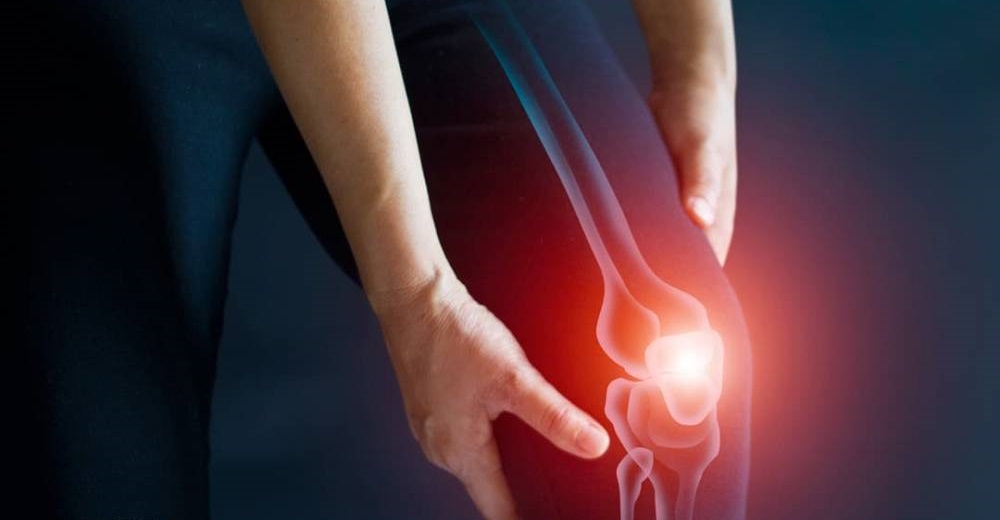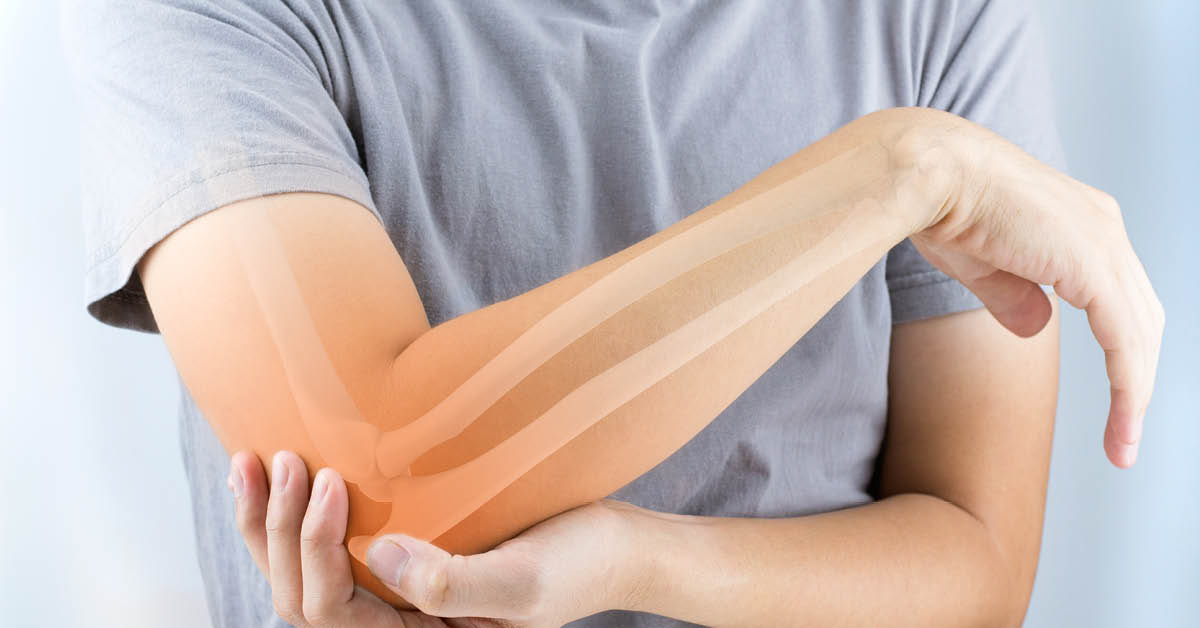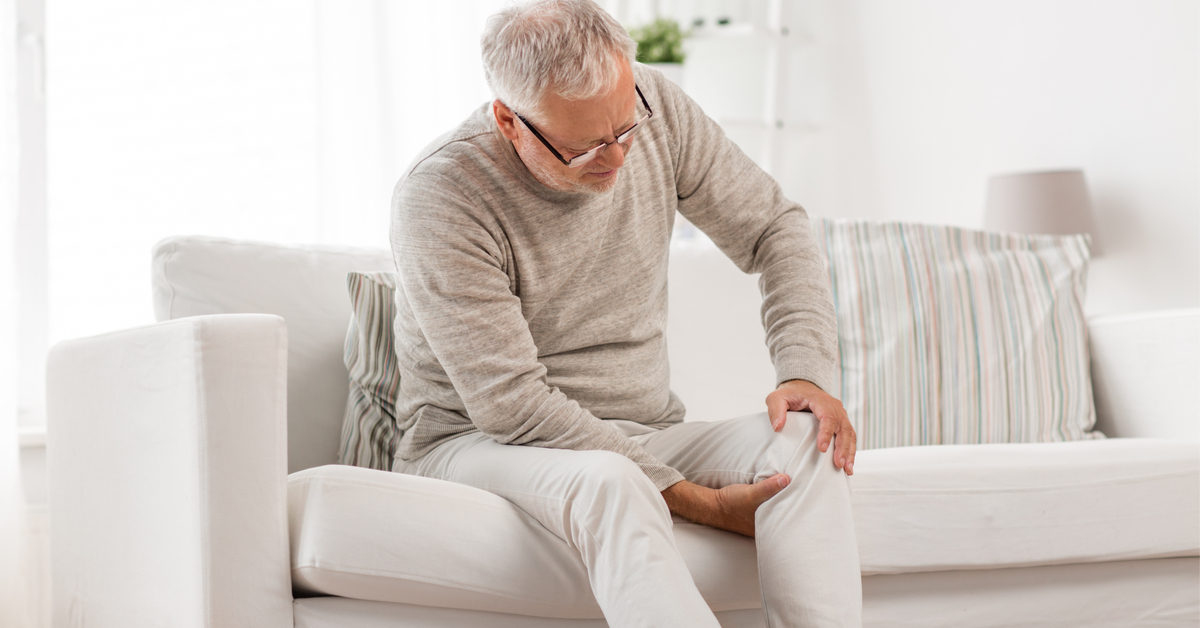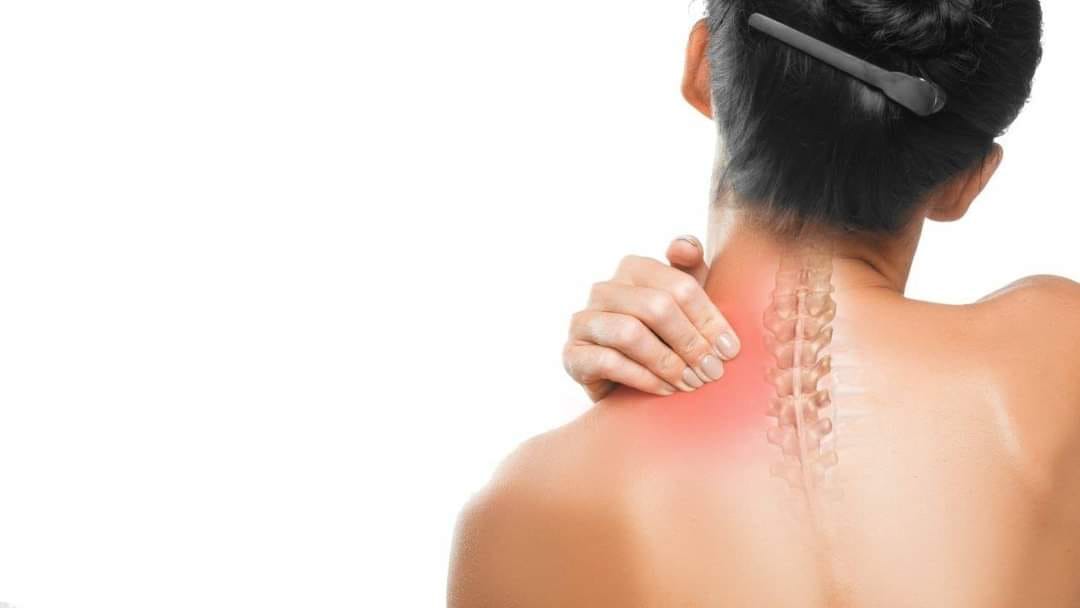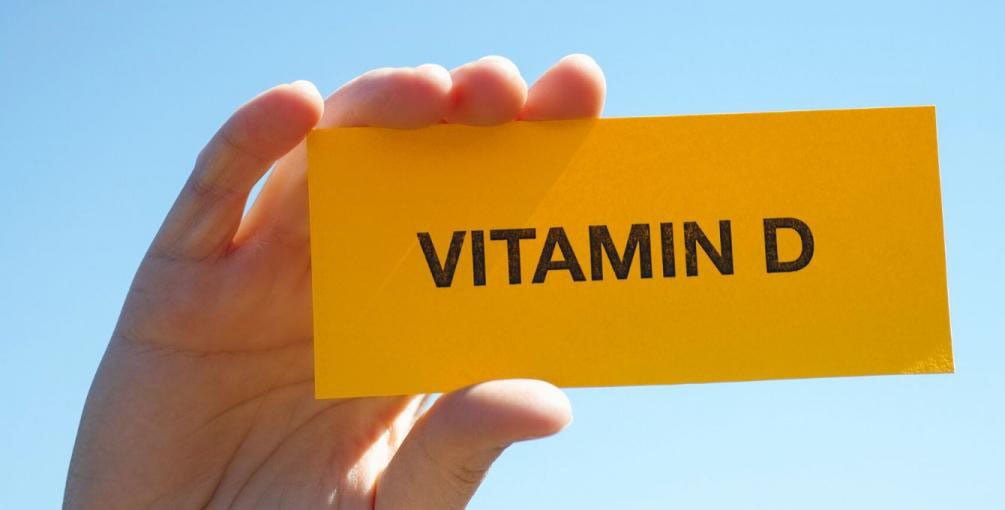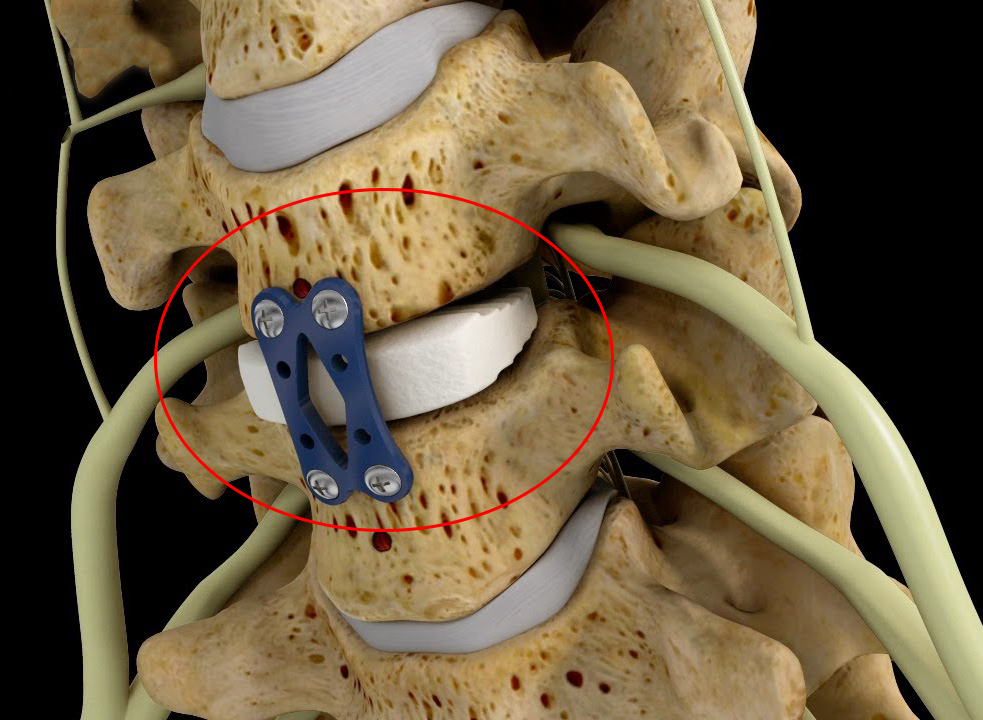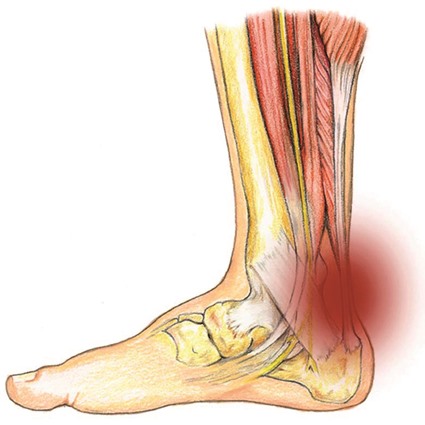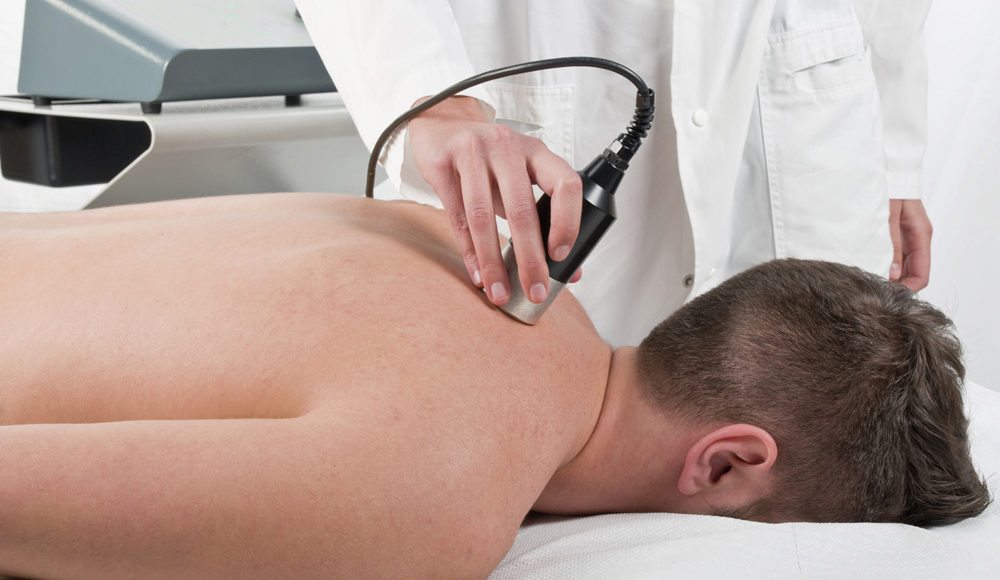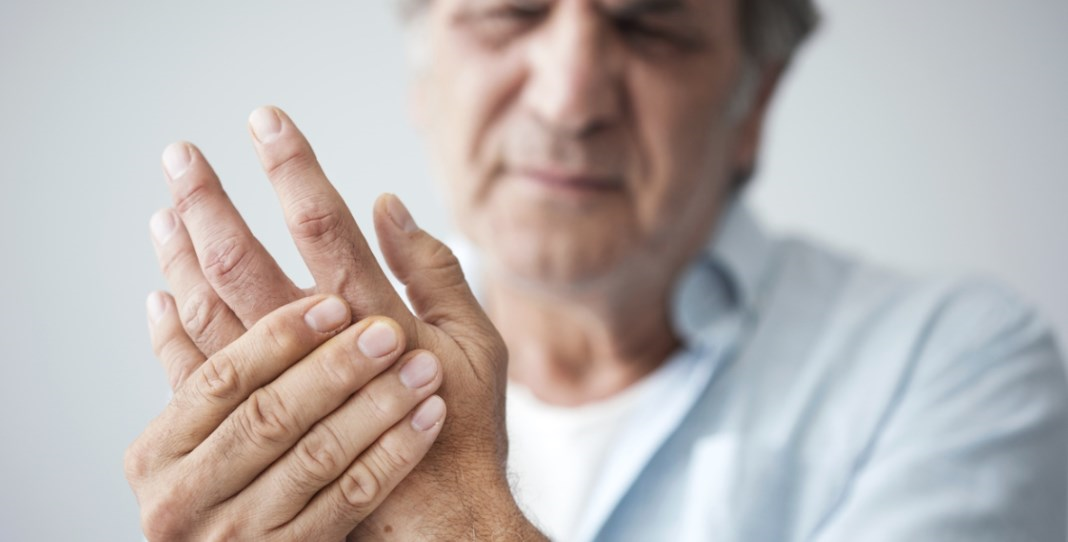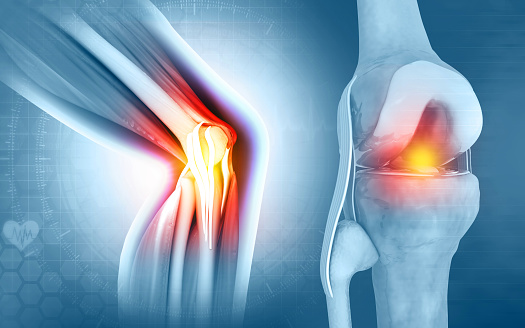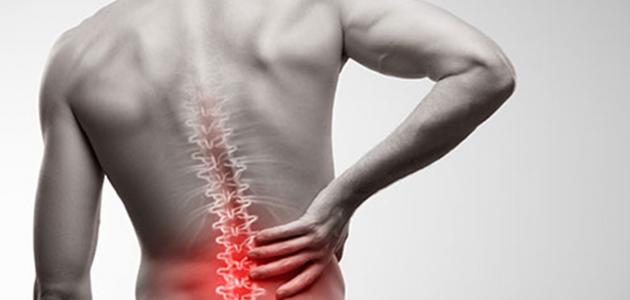Discover the Permanent Treatment for Back Pain and the Causes of Chronic Back Pain
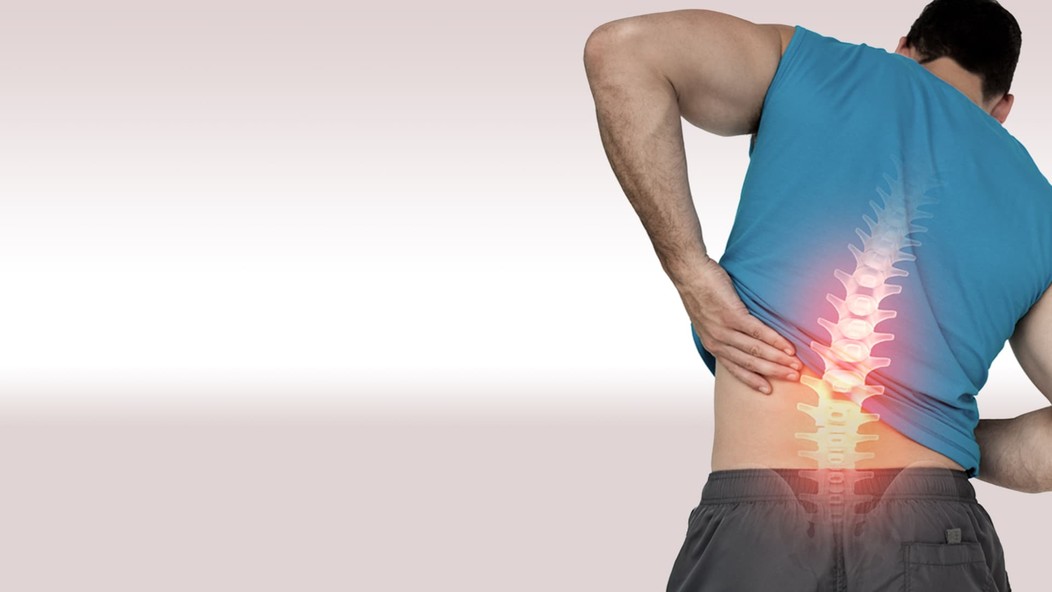
Permanent Treatment for Back Pain
Back pain is a common health issue that many people of various ages experience. This pain can be bothersome and affect daily life and the ability to perform routine activities. However, finding a permanent treatment for back pain can be challenging, as the causes of this pain can be multiple and diverse.
There are many treatments and measures available to alleviate back pain, ranging from home remedies to medical treatments and physical therapy. Home remedies can be effective for mild and non-chronic back pain. These remedies may include taking over-the-counter pain relievers and using warm compresses to relieve tension and reduce pain.
If symptoms do not improve after several weeks of home treatment, it is advisable to consult a doctor for alternative treatments or stronger medications. The appropriate type of treatment depends on the cause and severity of back pain. Medical treatments may include the use of non-steroidal anti-inflammatory drugs (NSAIDs) such as ibuprofen and naproxen sodium to relieve pain and reduce inflammation.
In addition to medical treatments, natural therapy and rehabilitation may be necessary to reduce pain and promote healing. Natural therapy aims to strengthen the muscles around the spine, improve flexibility, and enhance body posture. Natural therapy may include muscle strengthening exercises, stretching exercises, and manual therapy techniques such as massage and spinal manipulation.
In some cases where back pain radiates to the legs, surgical treatment may be necessary. Surgery is performed in specific cases, such as when a herniated disc compresses a nerve and causes pain. Surgeons work to remove the herniation and relieve nerve pressure to alleviate pain and improve the condition.
It is worth noting that there is no permanent treatment for back pain, as symptoms may sometimes recur after a period of time. However, the risk of developing or reducing the severity of back pain can be minimized by maintaining a healthy lifestyle, engaging in regular physical exercise, and maintaining good body posture while sitting and standing.
In general, individuals suffering from back pain should consult a doctor to assess their condition and determine the appropriate treatment. Natural therapy and home remedies may be sufficient to alleviate pain and improve the condition, while some individuals may require medical or surgical treatments to permanently eliminate back pain.
What Is the Cause of Chronic Back Pain?
Chronic back pain is a common health problem that many people experience. It can have a significant impact on individuals’ lives and their ability to carry out daily activities. Many people wonder about the cause of this persistent back pain and what could be responsible for it.
There are several potential causes of chronic back pain, including:
- Muscle and Ligament Strain: Repeatedly lifting heavy objects or sudden, unexpected movements can strain the muscles of the back and the ligaments of the spine. Twisting or straining due to repetitive movements or poor body positioning can also lead to muscle and ligament strain.
- Acute Injury: Chronic back pain can result from traumatic events such as falls or car accidents. Acute injury can cause tears in back tissues, including muscles and ligaments, leading to ongoing pain.
- Spinal Disc Problems: Chronic back pain may be due to issues with the spinal discs, such as disc herniation or compression of nerves. This can cause sharp and persistent pain in the back and lower extremities.
- Arthritis: Arthritis is a potential cause of chronic back pain. Arthritis can affect the spinal joints and lead to pain, swelling, and stiffness in the back. Genetic Factors: Genetic factors may play a role in chronic back pain. Some individuals may have a genetic predisposition to develop back problems, such as spinal curvature or weakened supporting back muscles.
- Psychological Factors: Psychological factors can contribute to chronic back pain. Emotional stress, anxiety, and depression can exacerbate pain and prolong its duration.
- Lifestyle Factors: Lifestyle factors, such as lack of physical activity, prolonged sitting, and excess weight, can contribute to chronic back pain. Inadequate exercise and extended periods of sitting in front of a computer or television can lead to muscle weakness and increased pressure on the spine.
- Other Medical Conditions: Chronic back pain may also be a result of other medical conditions, such as rheumatoid arthritis or spinal tumors. Consulting a doctor is essential for an accurate diagnosis and appropriate treatment.
It is important that the cause of chronic back pain be diagnosed by a specialist physician. Proper treatment may involve rest, muscle strengthening, physical therapy, and pain-relieving medications. In severe cases, surgery may be necessary to address the underlying cause of the pain. To prevent chronic back pain, regular physical exercise, maintaining proper body posture while sitting and standing, and strengthening the supporting muscles of the back are recommended.
In conclusion, individuals experiencing chronic back pain should consult a doctor to obtain an accurate diagnosis and receive appropriate treatment. Many cases can respond to treatment and significantly improve with medical guidance and proper preventive measures.
What Is Natural Treatment for Back Pain?
Natural treatment for back pain involves a set of methods and techniques used to relieve pain and improve the condition of the back without the need for pharmaceutical treatments or surgery. Natural treatment for back pain is considered an effective option for many individuals suffering from chronic back pain who wish to avoid chemical treatments or the side effects of surgery.
Relaxation and stretching exercises are among the most important methods used in natural treatment for back pain. Stretching exercises can help improve muscle flexibility and alleviate tension and muscle tightness. Some useful exercises include side stretching, backward stretching, and forward stretching. It is recommended to perform these exercises regularly for the best results.
In addition to exercises, yoga is also an effective method for relieving back pain. Yoga exercises can improve flexibility, balance, and strengthen the back muscles. Yoga exercises may include deep breathing, relaxation exercises, and balance exercises.
Manual therapy techniques can be used effectively as a way to treat back pain. These techniques include massage, manual manipulation, and acupuncture. Manual therapy aims to relieve tension, improve blood circulation, and release trapped energy in the body. In cases where natural treatments do not respond and the pain persists for more than six weeks or worsens with natural therapy, it becomes necessary to visit a doctor. Consulting a doctor is recommended for chronic or severe pain to assess the condition and guide appropriate treatment.
In conclusion, it is important to note that prevention is the best approach when it comes to back pain. Regularly engaging in daily activities, maintaining proper body posture, and strengthening the back muscles are recommended. Natural treatment for back pain, which includes relaxation exercises, stretching, yoga, and manual therapy techniques such as massage and manual manipulation, is an effective and safe option for pain relief and improving back health.
Does Vitamin D Deficiency Cause Lower Back Pain?
Vitamin D deficiency is a common health issue in many individuals and may not have a clear impact on health in some cases. However, there is some research suggesting that vitamin D deficiency may be related to chronic lower back pain.
Two studies conducted in 2015 and 2018 linked vitamin D deficiency to chronic lower back pain. One of the studies found that 98 individuals suffering from lower back pain found that increased pain severity was associated with lower levels of vitamin D. Researchers in these studies also linked arthritis, muscle pain, and chronic bone pain to vitamin D deficiency.
Chronic lower back pain is a common health problem that many people experience. There can be multiple causes for this pain, including arthritis, muscle tension, and spine issues. It is noteworthy that there is a connection between vitamin D deficiency and these pains.
Vitamin D is considered a crucial vitamin that plays a significant role in bone health. Vitamin D helps improve the body’s ability to absorb calcium, which is an essential element for bone health. Consequently, vitamin D deficiency can negatively affect bone health and may increase the risk of developing chronic lower back pain.
Moreover, other symptoms of vitamin D deficiency may manifest in the body, such as fatigue, muscle weakness, and muscle cramps, along with sudden mood swings, including a bad mood and depression. These symptoms tend to worsen during the winter season when there is limited exposure to sunlight, leading to reduced production of vitamin D in the body.
To prevent vitamin D deficiency and maintain bone health, it is advisable to follow some dietary guidelines. Vitamin D can be obtained from foods such as egg yolks, salmon, sardines, mackerel, red meat, and liver. Additionally, consuming foods fortified with vitamin D, such as certain breakfast cereals, is recommended.
In general, individuals suffering from chronic lower back pain should consult a doctor to assess their condition, identify potential causes, and determine appropriate treatment. Treatment may include taking vitamin D supplements if a deficiency is diagnosed.
In summary, some studies suggest a connection between vitamin D deficiency and chronic lower back pain. Vitamin D is one of the essential factors for bone health, and its deficiency can negatively affect the body. Therefore, individuals experiencing these pains should consult a doctor to evaluate their condition and receive appropriate treatment, which may include vitamin D supplements if a deficiency is identified.
Does Walking Strengthen Back Muscles?
Walking is a simple and easy activity that can have a significant impact on overall health and, in particular, on the health of back muscles. When we walk, we use muscles in our legs, hips, abdomen, and back, which helps to strengthen and activate these muscles.
Strengthening the back muscles is crucial for maintaining proper spinal alignment and preventing chronic back pain. When the back muscles are strong, they can better support the pressure on the spine, reducing the likelihood of herniated discs and recurrence.
Additionally, walking helps increase blood flow, nutrients, and oxygen to the cells, promoting the healing process and reducing the pain associated with herniated discs. Therefore, walking can be effective in relieving symptoms and improving the condition of patients. It’s essential to start walking gradually without overexerting the body. It’s recommended to begin with short walks for a short duration initially and gradually increase the distance and time over time. It’s also important to be cautious and stop walking if you experience any increase in pain. In case the symptoms persist or worsen, consulting a doctor is necessary.
In addition to walking, there are other activities that can help strengthen back muscles and maintain back health. Among these activities are swimming, yoga, and mobility exercises. Patients can choose the activity that suits them and is appropriate for their health condition.
In conclusion, walking can be effective in strengthening back muscles and improving the condition of patients with herniated discs. It is a simple and cost-effective activity that can be done at any time and anywhere. However, patients should be cautious and stop walking if they experience any increase in pain, and they should consult a doctor if the symptoms persist or worsen.
How to Avoid Back Pain?
Back pain is a common problem that many people experience at different stages of their lives. Back pain can be bothersome and negatively impact daily life and physical activity. Therefore, it is essential to follow some tips to avoid back pain and maintain the health of the spine. Here are some important tips to avoid back pain during the day:
Exercise: Regular physical activity is one of the best ways to strengthen back and abdominal muscles, reducing the risk of developing back pain. It is recommended to engage in low-impact exercises such as walking, cycling, and swimming. Consulting a physical therapist to design an appropriate exercise program for back muscle strengthening is advisable.
Maintain Proper Body Posture: Be mindful of your body posture while sitting, standing, and walking. Sit in a chair that supports your lower back and keeps your knees at the same level as your hips. Stand with a straight posture, shoulders level, abdomen tightened, and legs straight.
Use Proper Cushions: Use suitable cushions to support your neck and back while sitting and sleeping. It is best to use medium-height cushions that properly support the neck and back.
Avoid Lifting Heavy Loads: Avoid lifting heavy loads improperly, as this can strain the muscles and ligaments in the back, increasing the risk of back pain. When lifting heavy objects, use the correct lifting technique and rely on your strong legs and muscles.
Maintain a Healthy Weight: Excess weight is a contributing factor to an increased risk of back pain. Therefore, it is essential to maintain a healthy weight through regular exercise and a balanced diet.
Take Breaks and Relax: Take regular breaks during the day and avoid sitting for extended periods in the same position. You can also practice relaxation techniques such as meditation and deep breathing to relieve tension and stress that can cause back pain.
In summary, back pain can be avoided by engaging in appropriate physical exercises, maintaining proper body posture, using suitable cushions, lifting heavy objects correctly, maintaining a healthy weight, taking regular breaks, and practicing relaxation techniques. It may be necessary to consult a physical therapist or healthcare provider if back pain persists or worsens.
Does Hot Water Treat Back Pain?
Hot water is considered one of the common home remedies for relieving back pain. Studies have shown that applying heat to the painful area can help relax muscles and alleviate pain. Heat works when applied to the body by increasing blood flow to the affected area, providing the necessary oxygen and nutrients for muscle and tissue recovery.
Hot packs are commonly used in the treatment of back pain, where a hot water bottle or a cloth soaked in hot water is placed on the affected area. Hot packs can be used repeatedly throughout the day for the best results.
The benefits of using hot packs for the back include:
- Expanding Blood Vessels: Applying heat to the affected area helps expand blood vessels, allowing for increased oxygen and nutrient-rich blood flow. This can reduce irritation and inflammation in the muscles and tissues.
- Muscle Spasm Relief: Heat helps dilate blood vessels and improve blood flow to tense muscles. This can help relieve muscle spasms and reduce pressure on surrounding nerves.
- Improved Flexibility and Mobility: Heat application can increase the flexibility of the muscles and tissues surrounding the back. This can help improve back movement and reduce stiffness.
- Pain Relief: Applying heat to the back is one of the most effective ways to alleviate pain. Heat stimulates the heat receptors in the skin, which can reduce our perception of pain.
However, it’s important to note that using hot packs for back pain is not the optimal solution for all cases. There may be specific conditions that require immediate consultation with a healthcare professional, such as if the pain persists even after applying hot packs or if the pain radiates to other parts of the body. There may be a more significant issue that needs evaluation and treatment by a specialist.
In addition, some precautions should be followed when using hot packs for the back. It’s important to avoid placing the hot pack directly on sensitive skin or open wounds. Also, excessive or prolonged use of heat can lead to skin burns, so it’s essential to use hot packs with caution.
In general, using hot packs for the back can be an effective and cost-efficient method for relieving back pain. However, if you experience continuous or severe back pain, it’s advisable to consult a healthcare professional for a proper diagnosis and guidance on appropriate treatment.
Does Walking Too Much Cause Back Pain?
Walking is an important physical activity that many people engage in to maintain good health and enjoy movement. However, some individuals may experience back pain while walking, raising the question of whether walking too much causes back pain or not.
Before discussing the relationship between walking and back pain, it’s important to understand that there are various reasons for back pain, including muscle strain, arthritis, herniated discs, and others. Therefore, determining the cause of back pain depends on an appropriate medical diagnosis.
In many cases, walking can be a contributing factor to the onset of back pain. This can happen when a person is not accustomed to regular physical activity or when they have weakness in their back muscles and spinal ligaments. Walking too much in these cases can place excessive stress on the spine and the surrounding tissues, leading to pain.
However, the final answer to whether walking too much causes back pain depends on each individual’s specific condition. It’s important to understand that, in general, walking is considered a beneficial activity for back health, as it can help strengthen back muscles and spinal ligaments, improving endurance and reducing pain.
If you experience back pain while walking, you may need to follow some tips to reduce the pain and improve your physical condition:
- Exercise: It is recommended to engage in low-impact exercises like walking and swimming. These exercises can help strengthen back muscles and spinal ligaments, improving endurance and reducing pain.
- Maintain a Healthy Weight: Excess weight is a contributing factor to back pain. Therefore, it is advised to maintain a healthy weight through regular physical activity and a balanced diet.
- Maintain Proper Body Posture: Pay attention to your body posture while walking. Keep your back straight and shoulders relaxed. You can consult a fitness trainer or physical therapist to learn the correct posture during walking.
In general, walking can be safe and beneficial for back health if done correctly and with appropriate guidance. However, if you experience persistent or severe back pain, it’s advisable to consult a healthcare professional for a proper diagnosis and guidance on treatment.
Does Sleeping on the Floor Treat Back Pain?
Many people suffer from back pain, which can cause a lot of discomfort and tension. Back pain is a common issue that affects people of various ages. Sleeping on the floor is considered one potential solution for alleviating and treating this pain.
Studies suggest that sleeping on the floor may play an effective role in relieving and treating back pain. When you sleep on the floor, the weight of your body is distributed more evenly on the spine, reducing pressure on the vertebrae and nerves. Sleeping on the floor also provides the spine, muscles, and joints with a good and natural alignment for rest and relaxation.
Spinal alignment and improving body posture are considered primary benefits of sleeping on the floor. When the spine is in the correct position, pressure is evenly distributed on the vertebrae, reducing the chances of back pain. Furthermore, sleeping on the floor can help reduce various joint pains throughout the body. When muscles and joints are properly aligned, excess pressure and friction are minimized, contributing to pain relief and improved condition.
Studies also indicate that sleeping on the floor may reduce the risk of various spinal problems in general. When the body is in the correct position during sleep, pressure is evenly distributed on the vertebrae, reducing the chances of issues like disc herniation, arthritis, and muscle spasms.
In addition to the mentioned health benefits, sleeping on the floor may contribute to lowering the body’s temperature during sleep. When the body is in direct contact with the floor, heat is dissipated more effectively, reducing the chances of excessive sweating or nighttime overheating.
Despite the potential benefits of sleeping on the floor, it may not be suitable for everyone. Some people may find sleeping on the floor uncomfortable and it may exacerbate their pain instead of alleviating it. Therefore, individuals with back pain should consult a doctor before attempting to sleep on the floor as a treatment method.
In summary, sleeping on the floor can play an effective role in relieving and treating back pain, in addition to improving the health of the spine and joints. However, sleeping on the floor should be done cautiously and with medical consultation, and it should be associated with other factors such as appropriate exercise and maintaining a healthy weight.
Is Cracking Your Back Harmful?
Cracking your back is a common phenomenon that many people may experience in their daily lives. They may feel the urge to crack their backs to achieve a sense of comfort and muscle tension relief. This is usually considered a normal and non-harmful activity. However, there are some conflicting opinions about whether cracking your back may cause long-term damage.
The structure of the spine plays a crucial role in the nervous system, and therefore, there may be a potential risk to the spinal cord when twisting or engaging in any activity that leads to back cracking. Some chiropractors have pointed out that self-cracking the back repeatedly may lead to excessive joint movement, which could increase pain and weaken those joints.
On the other hand, many people find genuine relief when cracking their backs, especially if they are experiencing back or neck pain. Some believe that the desire to crack the back may be related to the release of endorphins, a hormone that acts as a natural painkiller, providing temporary comfort. However, there is not enough scientific evidence to support this hypothesis, though some claims suggest it.
Additionally, there is synovial fluid between the bony joints in the spine, acting as a lubricant. When you crack your back, the capsule containing this synovial fluid expands, leading to the formation of bubbles. While there is no scientific confirmation that these bubbles cause harm, some individuals may experience temporary relief after back cracking.
Overall, cracking your back may provide temporary relief for some people, but there is no scientific consensus on whether it causes long-term harm. People experiencing continuous back pain are advised to consult specialists such as physical therapists or chiropractors who possess the knowledge and experience to assess their condition and provide appropriate treatment. Attempting to crack your back yourself without sufficient knowledge may lead to injuries, strains, fractures, or nerve damage.
Does Sleeping on the Floor Treat Back Pain?
Many people suffer from back pain, which can cause a lot of discomfort and tension. Back pain is a common issue that affects people of various ages. Sleeping on the floor is considered one potential solution for alleviating and treating this pain.
Studies suggest that sleeping on the floor may play an effective role in relieving and treating back pain. When you sleep on the floor, the weight of your body is distributed more evenly on the spine, reducing pressure on the vertebrae and nerves. Sleeping on the floor also provides the spine, muscles, and joints with a good and natural alignment for rest and relaxation.
Spinal alignment and improving body posture are considered primary benefits of sleeping on the floor. When the spine is in the correct position, pressure is evenly distributed on the vertebrae, reducing the chances of back pain. Furthermore, sleeping on the floor can help reduce various joint pains throughout the body. When muscles and joints are properly aligned, excess pressure and friction are minimized, contributing to pain relief and improved condition.
Studies also indicate that sleeping on the floor may reduce the risk of various spinal problems in general. When the body is in the correct position during sleep, pressure is evenly distributed on the vertebrae, reducing the chances of issues like disc herniation, arthritis, and muscle spasms.
In addition to the mentioned health benefits, sleeping on the floor may contribute to lowering the body’s temperature during sleep. When the body is in direct contact with the floor, heat is dissipated more effectively, reducing the chances of excessive sweating or nighttime overheating.
Despite the potential benefits of sleeping on the floor, it may not be suitable for everyone. Some people may find sleeping on the floor uncomfortable and it may exacerbate their pain instead of alleviating it. Therefore, individuals with back pain should consult a doctor before attempting to sleep on the floor as a treatment method.
In summary, sleeping on the floor can play an effective role in relieving and treating back pain, in addition to improving the health of the spine and joints. However, sleeping on the floor should be done cautiously and with medical consultation, and it should be associated with other factors such as appropriate exercise and maintaining a healthy weight.
Is Cracking Your Back Harmful?
Cracking your back is a common phenomenon that many people may experience in their daily lives. They may feel the urge to crack their backs to achieve a sense of comfort and muscle tension relief. This is usually considered a normal and non-harmful activity. However, there are some conflicting opinions about whether cracking your back may cause long-term damage.
The structure of the spine plays a crucial role in the nervous system, and therefore, there may be a potential risk to the spinal cord when twisting or engaging in any activity that leads to back cracking. Some chiropractors have pointed out that self-cracking the back repeatedly may lead to excessive joint movement, which could increase pain and weaken those joints.
On the other hand, many people find genuine relief when cracking their backs, especially if they are experiencing back or neck pain. Some believe that the desire to crack the back may be related to the release of endorphins, a hormone that acts as a natural painkiller, providing temporary comfort. However, there is not enough scientific evidence to support this hypothesis, though some claims suggest it.
Additionally, there is synovial fluid between the bony joints in the spine, acting as a lubricant. When you crack your back, the capsule containing this synovial fluid expands, leading to the formation of bubbles. While there is no scientific confirmation that these bubbles cause harm, some individuals may experience temporary relief after back cracking.
Overall, cracking your back may provide temporary relief for some people, but there is no scientific consensus on whether it causes long-term harm. People experiencing continuous back pain are advised to consult specialists such as physical therapists or chiropractors who possess the knowledge and experience to assess their condition and provide appropriate treatment. Attempting to crack your back yourself without sufficient knowledge may lead to injuries, strains, fractures, or nerve damage.
What Are the Symptoms of Back Muscle Tightness?
Back muscle tightness is a common condition that affects many people and can result in back pain and tension. The symptoms of back muscle tightness can vary and may include the following:
- Pain in the buttocks and legs or a sensation of tingling or numbness: An individual with back muscle tightness may experience pain in the buttocks and legs, often accompanied by a feeling of tingling or numbness in these areas.
- Curvature of the spine: Back muscle tightness can lead to the curvature of the spine, causing a change in the appearance of the back and a noticeable hunch.
- Foot drop: A person with back muscle tightness may have difficulty lifting the front of their foot or toes, causing them to drag when walking.
- Muscle weakness and fatigue: Back muscle tightness can result in muscle weakness and fatigue, affecting a person’s ability to perform daily activities efficiently.
- Shoulder or arm pain: Some individuals with back muscle tightness may experience pain in the shoulder or arm due to the associated muscle tension.
- Neck pain or difficulty in moving it: Back muscle tightness can also affect the neck area, leading to neck pain and difficulty in moving the neck.
- Stiffening of the spine: Back muscle tightness can cause the spine to become stiff, affecting back flexibility and movement.
- Headaches, especially in the lower back of the head: Those with back muscle tightness may experience headaches, particularly in the lower back of the head.
Various factors can contribute to the development of back muscle tightness, including excessive muscle strain, psychological stress, sports injuries, improper posture while sitting or standing, and incorrect lifting techniques. Therefore, individuals experiencing back muscle tightness should adhere to certain measures to alleviate symptoms and expedite the healing process, such as:
- Sufficient rest: It is recommended to take an adequate amount of rest to allow the muscles to relax and recover.
- Application of ice or heat: Ice or heat can be used on the affected back area to reduce pain and inflammation.
- Appropriate physical exercises: Engaging in exercises that target strengthening the back muscles and improving their flexibility is advised.
- Use of pain-relief medications: Over-the-counter pain-relief medications available at pharmacies can be used to alleviate pain and muscle tension.
- Physical therapy: Physical therapy can help relieve back muscle tightness through specific exercises and techniques.
It is essential to consult a doctor if the symptoms persist or worsen, as there may be a need for specialized medical intervention to diagnose and treat back muscle tightness effectively.
Does Ice Help with Back Pain?
Ice is a common element in home treatment for relieving back pain. While there is no conclusive scientific evidence proving the effectiveness of ice in resolving back pain issues, placing an ice pack on the back or massaging the back with ice can help alleviate pain and reduce inflammation.
Reports published in the German magazine “Stern” suggest that ice has a mild numbing effect, as it restricts blood flow in the painful area, thus preventing pain stimuli from reaching the brain. Cold is known to reduce swelling and inflammation, contributing to pain relief.
To benefit from the advantages of ice in relieving back pain, you can use ice packs available in the market or create ice packs at home. Frozen ice bags or even frozen vegetable bags can serve as alternative options.
Ice can be applied by placing an ice pack on the painful area for a short period, taking care not to place ice directly on the skin to avoid ice burns. This process can be repeated several times a day, with breaks in between each session.
In addition to relieving back pain, ice packs can also be beneficial in treating other issues such as herniated discs or sciatic nerve pain.
However, ice should be used cautiously and not excessively, as prolonged exposure to cold can lead to tissue freezing or damage. Therefore, it is essential to avoid using ice for extended periods and to take breaks between each session.
In general, it can be said that using ice to relieve back pain can be effective in reducing pain and inflammation. However, it is advisable to consult a doctor before using ice as a home treatment, especially if the pain is severe or long-lasting. A doctor can provide specific advice and guidance based on your health condition and medical history.
Who is the best spine surgeon in Cairo?
Dr. Amr Amal is a consultant orthopedic and spine surgeon, and he is considered one of the best doctors in this field in Cairo. He is known for his high level of expertise and extensive knowledge in the field of orthopedic surgery. Dr. Amr Amal holds a doctorate degree in orthopedic surgery from Ain Shams University and has proven himself as one of the outstanding doctors in Egypt. He has also taught at Ain Shams University and is a faculty member there.
Dr. Amr Amal is a fellow in orthopedic surgery at Aachen German Hospital, which reflects his professionalism and ability to handle various complex cases.
Dr. Amr Amal offers comprehensive treatment for bone and joint problems, ranging from treating joint inflammations and bone degeneration to advanced surgical procedures such as artificial joint replacement and spine surgery. He utilizes various treatment methods, including medication, local injections, and surgical endoscopy.
Dr. Amr Amal is known for his dedication to listening to patients and understanding their psychological conditions. He strives to provide optimal personal and professional care for each patient. He is also known for providing excellent medical care and efficiently handling spine cases.
In summary, Dr. Amr Amal is one of the best spine surgeons in Cairo. He is distinguished by his extensive experience and broad knowledge, and he offers comprehensive and professional care to his patients. If you are in need of consultation or treatment in the field of spine surgery, Dr. Amr Amal is the right doctor for you.

